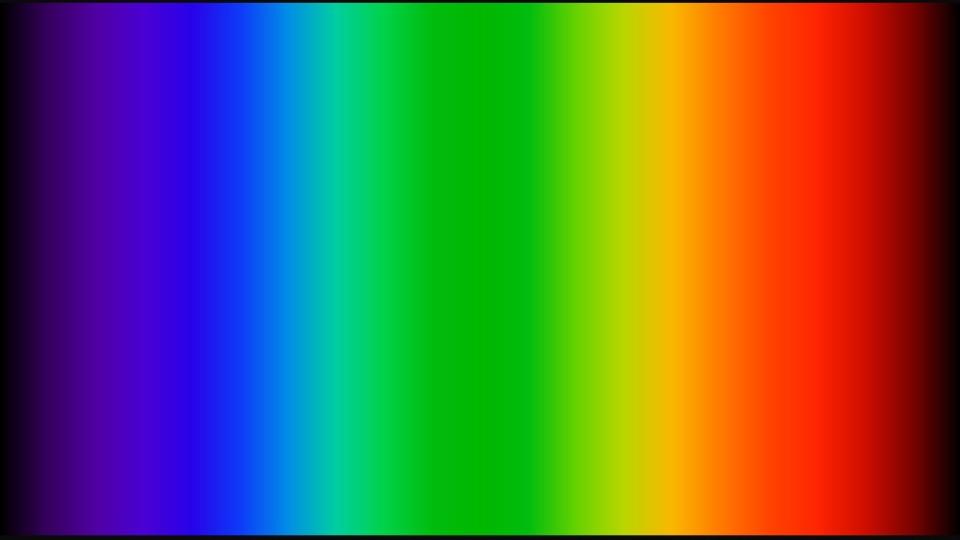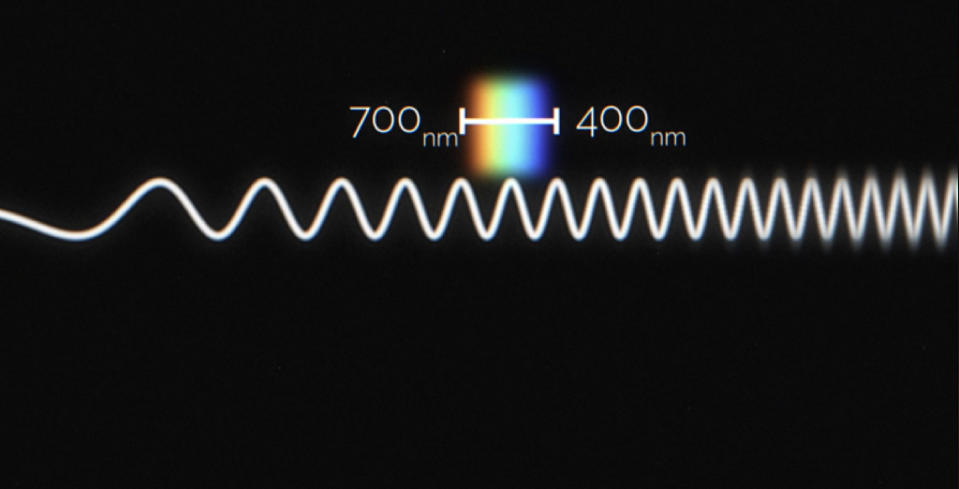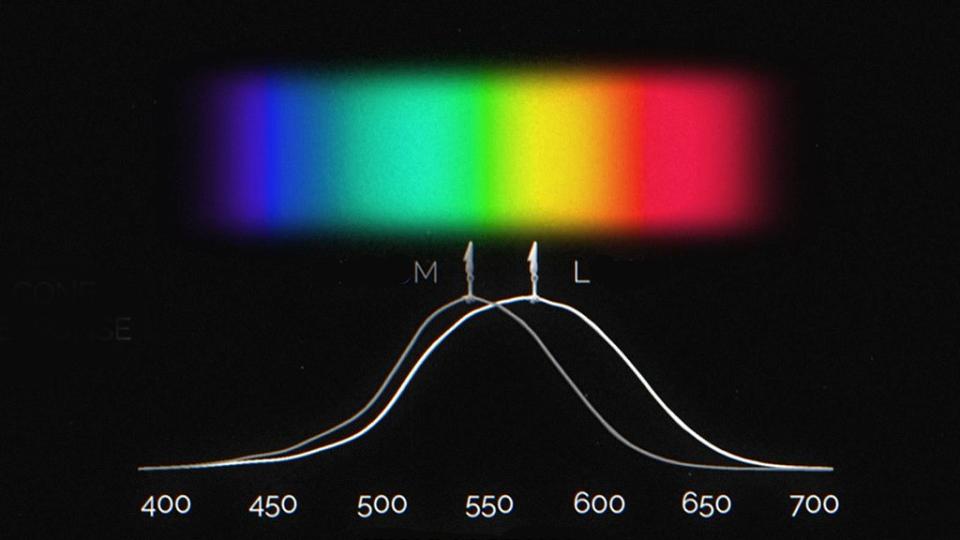
Look at this spectrum.
Although monitors cannot reproduce all the colors perceptible to the human eye and can only approximate most of the spectral colors, it’s still pretty cool, isn’t it?
But do you notice anything strange?
Every color you can imagine appears… except one.
Where is the purple color?
It is neither present nor in the visible light spectrum in nature. So why do we see it?
Our brains are one Spongy and squishy information processors.
They convert the billions of events happening around us into signals that we can understand.
And they interpret those signals as sounds, smells, flavours, sensations, etc.
One of the things that surrounds us is the electromagnetic field.

There are waves of energy rippling through this field and their frequency determines a range of effects.
Some waves can reheat soup in the microwave, Others show us your bones with X-raysOthers broadcast your favorite radio shows.
Humans can only detect a small fraction of these wavelengths with our bodies, and a lot of it with our eyes.
We call that visible light.
Why we only detect a narrow range of waves is up for debate.
But what we do know is that electromagnetic waves between 400 and 700 nanometers, or the visible light spectrum, are the only wavelengths that travel easily through water.
It also happens to be part of the electromagnetic wave spectrum What else does the sun emit?.

Since our early ancestors lived in the sea and were illuminated by the sun, it stands to reason that we evolved to detect the most common and useful wavelengths in the spectrum.
From waves to colours
Our eyes detect color through specialized cells that are concentrated in the macula, the center of the retina.
There are three types of cones in the human eye.
-
Type L: sensitive to long wavelengths
-
Type M: sensitive to medium wavelengths
-
Type S: sensitive to short wavelengths
The S detects the blues. letter M, green; Ls, hm.
But we see more than just red, green and blue.
The cone cells in your eyes overlap the wavelengths they detect.
Look at this chart.

You can see that when a beam of light with a wavelength of 570 nanometers enters your eye, it stimulates the L and M cones.
Their responses are combined and converted into an electrical message that is sent along the optic nerve to the brain as a single signal.
And this is the sign that we interpret as yellow light.
The curious feature of this system is that when two beams of light whose wavelengths add up to the same object — in this case 570 nanometers — enter the eye at the same time, the signal sent to the brain is the same.
These two rays of light combined cause us to see the color yellow as well.
The screen you’re watching takes advantage of the way our brain perceives color.
If you look closely, you can see that screens are made up of small groups of red, green, and blue lights, but your screen can only reproduce the full spectrum.
Every color we notice can be created via this dual pathway: a single wavelength of light, or a group of wavelengths that stimulate our cones in the same way.
Except for one.
purple

There is no official purple.
There is no wavelength of light for purple, which means the human brain makes it, but how?
We only perceive it when the S and L cones pick up a pure red and blue light signal.
Our brains literally create it.
because?
We do not know.
However, it is potentially very beneficial, since a lot of our early primate ancestors lived in green forests.
Purple fruits and flowers would have made the greatest contrast against the green background, and seeing them made it easier for our ancestors to find a tasty lunch.
Our brain makes all kinds of weird cognitive leaps all the time.
You might be surprised at how much the world around you is Not exactly what it seems.
* This article is adapted from the BBC Reel video “Magenta: The Color That Doesn’t Exist”. If you want to see itAnd click here.
You may also be interested in | on video
Horror chase from a traffic police officer to a motorist.

“Proud web fanatic. Subtly charming twitter geek. Reader. Internet trailblazer. Music buff.”

:quality(85)/cloudfront-us-east-1.images.arcpublishing.com/infobae/TEQF6EONZRFGLLLDIDD4L2O4EE.jpg)

:quality(75)/cloudfront-us-east-1.images.arcpublishing.com/elcomercio/XU32LRAEZFDDPNVHLFU3CKVBYY.jpg)



More Stories
How to create 3D videos with my iPhone, it will be very useful even for your business
NASA discovers an anomaly in the Earth’s magnetic field that could have serious consequences for humans
Can the Earth be divided into two parts?